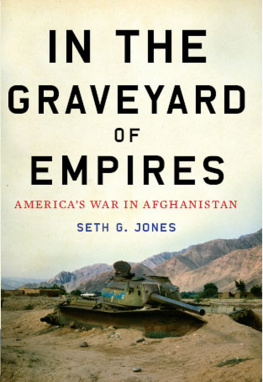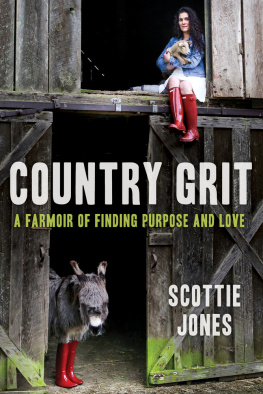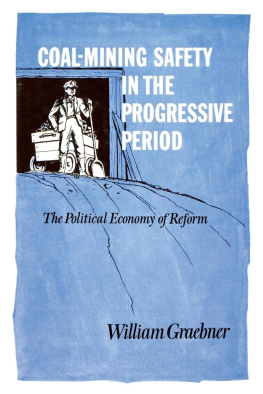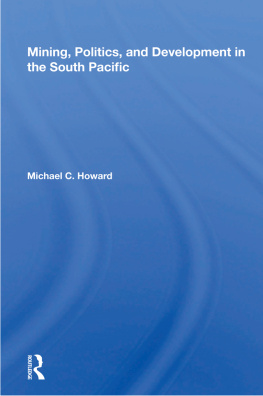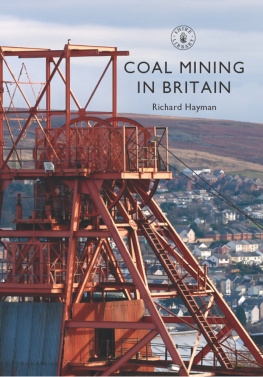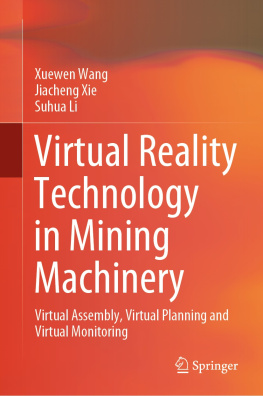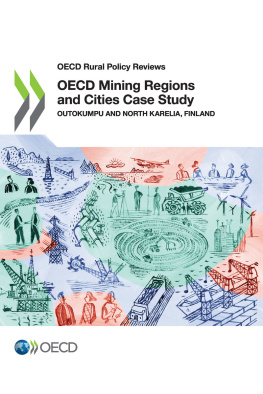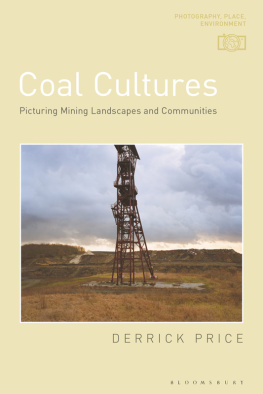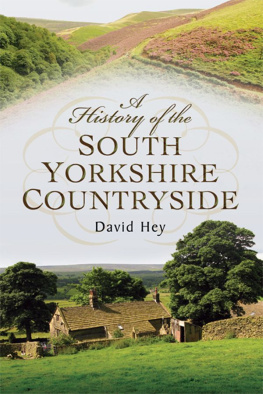Jones - South Yorkshire mining villages: a history of the regions former coal mining communities
Here you can read online Jones - South Yorkshire mining villages: a history of the regions former coal mining communities full text of the book (entire story) in english for free. Download pdf and epub, get meaning, cover and reviews about this ebook. City: Barnsley, year: 2017, publisher: Pen and Sword, genre: Religion. Description of the work, (preface) as well as reviews are available. Best literature library LitArk.com created for fans of good reading and offers a wide selection of genres:
Romance novel
Science fiction
Adventure
Detective
Science
History
Home and family
Prose
Art
Politics
Computer
Non-fiction
Religion
Business
Children
Humor
Choose a favorite category and find really read worthwhile books. Enjoy immersion in the world of imagination, feel the emotions of the characters or learn something new for yourself, make an fascinating discovery.
South Yorkshire mining villages: a history of the regions former coal mining communities: summary, description and annotation
We offer to read an annotation, description, summary or preface (depends on what the author of the book "South Yorkshire mining villages: a history of the regions former coal mining communities" wrote himself). If you haven't found the necessary information about the book — write in the comments, we will try to find it.
Jones: author's other books
Who wrote South Yorkshire mining villages: a history of the regions former coal mining communities? Find out the surname, the name of the author of the book and a list of all author's works by series.
South Yorkshire mining villages: a history of the regions former coal mining communities — read online for free the complete book (whole text) full work
Below is the text of the book, divided by pages. System saving the place of the last page read, allows you to conveniently read the book "South Yorkshire mining villages: a history of the regions former coal mining communities" online for free, without having to search again every time where you left off. Put a bookmark, and you can go to the page where you finished reading at any time.
Font size:
Interval:
Bookmark:

South Yorkshire Mining Villages

The history of the regions coal mining villages is not only about places but also about people, many of them migrants. Shown here are William and Elizabeth Vernon. William was born in the hamlet of Micklebring just north of Maltby in 1829, and his wife was born in Wadworth a few miles to the north-east in 1837. The photograph shows them in later life. After their marriage they migrated just 13 miles westwards where William was employed by Newton Chambers & Co Ltd. William Vernon has two claims to fame. It was he who blew the buzzer at Tankersley Colliery on 21 January 1870, in his capacity as engine tenter, to warn troops and police in Barnsley that riots were taking place during the Thorncliffe lock-out of 186970. He then hid under the floorboards in the engine house. (see ) in the Vernons own cottage.
A History of the Regions Former Coal Mining Communities
Melvyn Jones

First published in Great Britain in 2017 by
Pen & Sword History
an imprint of
Pen & Sword Books Ltd
47 Church Street
Barnsley
South Yorkshire S70 2AS
Copyright Melvyn Jones 2017
ISBN 978 1 47388 077 1
eISBN 978 1 47388 079 5
Mobi ISBN 978 1 47388 078 8
The right of Melvyn Jones to be identified as the Author of this Work has been asserted by him in accordance with the Copyright, Designs and Patents Act 1988.
A CIP catalogue record for this book is available from the British Library
All rights reserved. No part of this book may be reproduced or transmitted in any form or by any means, electronic or mechanical including photocopying, recording or by any information storage and retrieval system, without permission from the Publisher in writing.
Pen & Sword Books Ltd incorporates the imprints of Pen & Sword Archaeology, Atlas, Aviation, Battleground, Discovery, Family History, History, Maritime, Military, Naval, Politics, Railways, Select, Transport, True Crime, Fiction, Frontline Books, Leo Cooper, Praetorian Press, Seaforth Publishing and Wharncliffe.
For a complete list of Pen & Sword titles please contact
PEN & SWORD BOOKS LIMITED
47 Church Street, Barnsley, South Yorkshire, S70 2AS, England
E-mail:
Website: www.pen-and-sword.co.uk
A t the outset I think I ought to declare my interest in the coal mining communities of South Yorkshire. My great-grandfather on my mothers side, Charles Seargent, was a miner who migrated to the Barnsley district at the end of the 1870s from the Tipton area of Staffordshire. My grandfather was born in Barnsley, when they were living on Gilchrist Terrace off Cemetery Road, but two of his brothers were born in Woolley. My great-grandfather worked at Barnsley Main in the early 1880s. They then migrated again in 1885, this time to Australia, where my great-grandfather worked in the mining industry in the town of Lithgow, 93 miles west of Sydney in New South Wales. After about a decade theyd had enough (or made enough money!) and came back to England to Barnsley. But not in the mines; my great-grandfather became a pub landlord, at the Shepherds Rest in Heelis Street. He also owned property in Kingstone on the outskirts of Barnsley.
His son, Arthur, my grandfather, however, who had been born in South Yorkshire but brought up in Australia, became a coal miner at Barnsley Main and remained there for the rest of his working life. He married Emily Dryden, the granddaughter of George Dryden, the son of a linen handloom weaver, John Dryden, who had moved with his family progressively southwards from Darlington, to Northallerton, Knaresborough and Leeds. By the time of the 1851census they were living and working in Barnsley. But the handloom linen industry was in rapid decline and linen manufacturing was becoming a factory industry that overwhelmingly employed girls and women to look after the looms. So George, who like his father had started his working life as a handloom weaver working in the family cellar on his loom, became a miner and went to live in Worsbrough Bridge. He was killed while sinking an ironstone mine at Rockley in 1863.
Two decades later, in the summer of 1884 in north Wales, a large colliery beside the River Dee, Mostyn Quay Colliery, was flooded and it never became operational again. This led to much outmigration of miners and their families to work in other north Wales collieries, to England and beyond (to the USA and Argentina). Most migrants to England went to the Lancashire coalfield. But in the same year that Mostyn Quay Colliery was flooded, a Mostyn man, Evan Parry, was appointed manager at Old Carlton Colliery in South Yorkshire. Some of his relatives joined him, they were joined by friends and neighbours and soon there was a Welsh colony in Carlton and neighbouring Smithies (see ). My grandfather, Robert Samuel Jones and his wife and two boys, came to Smithies in 1903 from Mostyn via Parr in Lancashire. They lived at first on the Old Road in Smithies, along with other migrants from north Wales and Robert Samuel worked at Barnsley Main. Eventually they had a family of eight including six boys: David, Emrys, Herbert, Edwin, Howell and Robert (my father) all but one of whom were miners for all or part of their working lives. David, the eldest son, survived the explosion at North Gawber in 1936. My dad also worked at North Gawber at that time but was not in the pit at the time of the explosion. Emrys died in 1941 from injuries following a pit accident.
I grew up in a mining family. My dad worked in local collieries (Old Carlton, North Gawber, Monk Bretton and New Carlton) for more than fifty years. We lived on a council estate in Smithies, but it was basically a mining village with most of the heads of household and often their sons working in local pits. Tommy Roberts pit paddy (a lorry with a tarpaulin roof and forms on both sides), used to stop on the main road opposite our house to pick up and drop off miners working at the Old Carlton and New Carlton pits. The first excursion I went on after the war was to Baslow in a Tommy Roberts pit paddy in the pouring rain! And every month a ton of coal was tipped at the gate which had to be carried along the path in buckets and piled up in the coil oil. During the Second World War Bevin Huts were built in Smithies, between New Lane and New Hill Road to accommodate Bevin Boys, i.e. young men conscripted for the armed forces but selected at random or who had volunteered to work in the coal mining industry rather than bear arms. Everywhere you went in the surrounding countryside you were aware of a long history of coal mining. Every time we went to play football and cricket we had to climb an old spoil heap to get to the flat area of ground (the bog) where we played and not far away there was the sloping tunnel of a drift pit or day oil as we called it. And on the way home from school on Wakefield Road we passed another spoil heap that had been given the name Majuba (after the Battle of Majuba Hill in the First Boer War in 1881). So, as I grew up I was surrounded by coal production, a landscape full of coal mining features and coal mining families.
What strikes me forcibly is that despite the large output of books on the local coal mining industry in recent years they have mostly been about the histories of the collieries themselves or about mining disasters or photographic books, again with an emphasis on the collieries themselves. There is just one very notable exception Dave Fordhams excellent on-going series of small books on the early development of colliery settlements on the concealed coalfield.
Font size:
Interval:
Bookmark:
Similar books «South Yorkshire mining villages: a history of the regions former coal mining communities»
Look at similar books to South Yorkshire mining villages: a history of the regions former coal mining communities. We have selected literature similar in name and meaning in the hope of providing readers with more options to find new, interesting, not yet read works.
Discussion, reviews of the book South Yorkshire mining villages: a history of the regions former coal mining communities and just readers' own opinions. Leave your comments, write what you think about the work, its meaning or the main characters. Specify what exactly you liked and what you didn't like, and why you think so.


